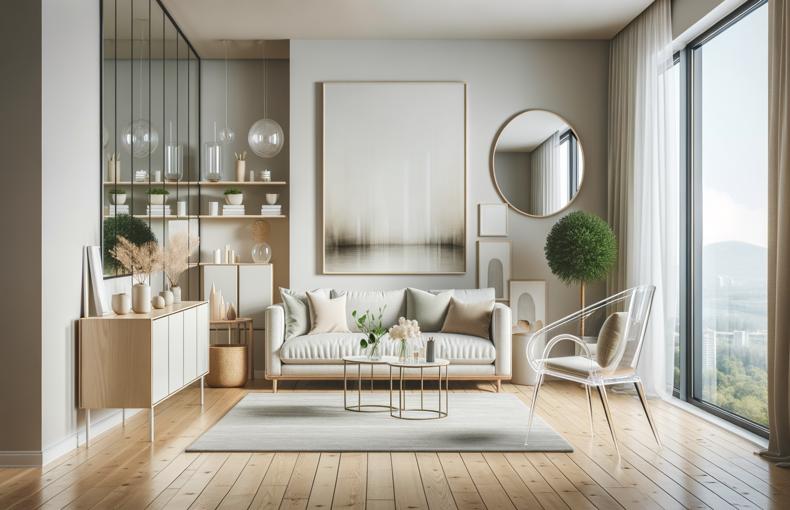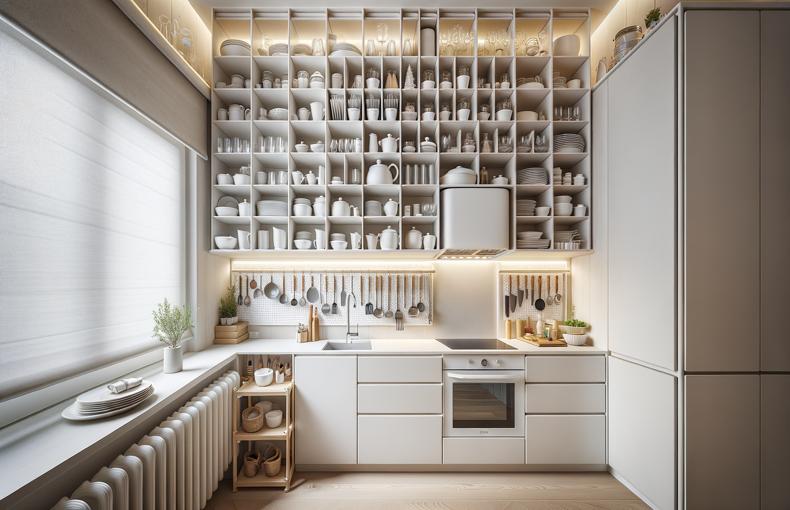How to Make Small Spaces Feel Larger: Tips and Tricks
In today's housing market, small spaces are becoming increasingly popular. Whether it's a cozy apartment, a tiny home, or just a smaller room in a larger house, making the most of limited square footage is both a challenge and an art. The good news is that with thoughtful planning and clever design, small spaces can feel much larger and more functional. This post will walk you through essential tips and tricks to transform your compact areas from cramped to comfortable.
1. Embrace Open Floor Plans
One of the most effective ways to make a small space feel larger is to remove unnecessary walls and embrace an open floor plan. By combining the kitchen, living, and dining areas into one cohesive space, you create a sense of flow that makes the area feel more expansive.
Pro Tip: Use consistent flooring throughout the open space to further enhance the feeling of continuity and spaciousness.
2. Utilize Multi-Functional Furniture
Furniture that serves multiple purposes is a lifesaver in small spaces. Think of a sofa that doubles as a guest bed or a dining table that can be folded down when not in use. Multi-functional furniture allows you to maximize your space without sacrificing style or comfort.
Examples:
- A coffee table with storage compartments.
- A bed with built-in drawers underneath.
3. Harness the Power of Mirrors
Mirrors are a classic trick for making a small room appear larger. They reflect light and create the illusion of depth, which can significantly open up a space. Consider placing mirrors opposite windows or in narrow hallways to maximize this effect.
Pro Tip: Opt for large, frameless mirrors for a sleek and modern look.
4. Optimize Natural Light
Natural light can drastically change the perception of space in a room. Keep window treatments light and airy to allow as much sunlight in as possible. If privacy is a concern, consider using sheer curtains or blinds that can be easily adjusted.
Pro Tip: If natural light is limited, strategically placed artificial lighting can help. Use a mix of ambient, task, and accent lighting to create a warm and inviting atmosphere.
5. Choose a Light and Neutral Color Palette
Light colors make a room feel open and airy, while dark colors can make it feel closed in and smaller. Opt for light, neutral shades like white, beige, or soft gray for walls, ceilings, and large furniture pieces. This will help bounce light around the room, enhancing the sense of space.
Pro Tip: Add pops of color through accessories like throw pillows, rugs, or artwork to keep the room from feeling too bland.
6. Incorporate Vertical Storage Solutions
When floor space is limited, look up! Vertical storage solutions, such as tall bookshelves, wall-mounted cabinets, or pegboards, allow you to utilize every inch of your space without overcrowding the room. This not only helps keep things organized but also draws the eye upward, making the room feel taller.
pegboards, allow you to utilize every inch of your space without overcrowding the room. This not only helps keep things organized but also draws the eye upward, making the room feel taller.
Examples:
- Floating shelves in the kitchen.
- Wall-mounted desks in home offices.
7. Keep It Clutter-Free
Clutter is the enemy of small spaces. It can quickly make even the largest rooms feel cramped and chaotic. Adopt a minimalist mindset by keeping surfaces clear and only displaying items that are both functional and beautiful.
Pro Tip: Regularly declutter and organize your space to prevent the accumulation of unnecessary items.
External Resource: Minimalist Living Tips
8. Use Rugs to Define Spaces
In open-concept areas, rugs can be used to delineate different zones, such as separating the living room from the dining area. This technique helps create a sense of structure and organization, even in small spaces.
Pro Tip: Opt for larger rugs rather than multiple small ones to avoid visual clutter.
9. Opt for Transparent Furniture
Furniture made from transparent materials like glass or acrylic can make a room feel more open because it doesn’t visually block the space. Consider a glass coffee table or clear acrylic chairs to create a sense of airiness.
block the space. Consider a glass coffee table or clear acrylic chairs to create a sense of airiness.
Pro Tip: Pair transparent furniture with light, reflective surfaces to amplify the effect.
Conclusion
Transforming a small space into a comfortable, functional, and visually appealing area is entirely possible with the right strategies. By embracing open layouts, choosing multi-functional furniture, utilizing light and mirrors, and keeping things organized, you can make any small space feel larger and more inviting. Remember, the key is to be intentional with your design choices and always consider how each element contributes to the overall feel of the space.
For more expert tips on small space living, don’t hesitate to explore the external resources linked throughout this post. Happy designing!











